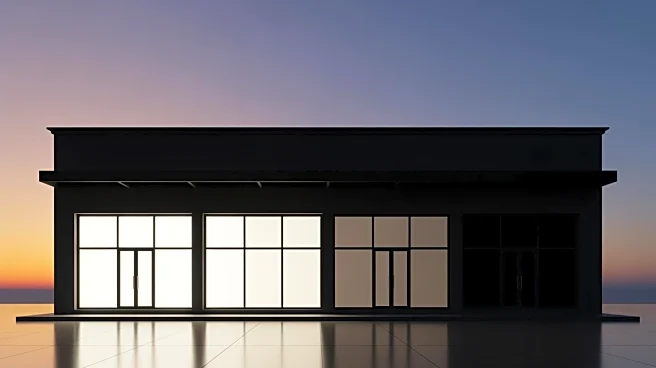What's Happening?
Modern architecture in the United States has become a central influence globally, with American architects leading the way in innovative design. The work of architects such as Louis I. Kahn, Philip Johnson,
and Ludwig Mies van der Rohe has shaped contemporary architecture worldwide. Despite the perception of modern architecture as uniform and inexpensive, the reality is a diverse and complex field with various styles and approaches. The Seagram Building in New York, designed by Mies van der Rohe, exemplifies the high cost and artistic value of modern architecture, contrasting with more generic structures. The article from Vogue highlights the diversity and creativity within American architecture, emphasizing the importance of recognizing the contributions of leading architects.
Why It's Important?
The prominence of American architects in modern architecture underscores the country's role as a leader in design innovation. This influence extends beyond aesthetics, impacting urban planning and development globally. The diversity within modern architecture challenges the notion of uniformity, showcasing the creative potential of architectural design. Understanding the contributions of architects like Mies van der Rohe and Louis I. Kahn is crucial for appreciating the evolution of architectural styles and their impact on urban landscapes. The recognition of American architecture's global influence highlights the importance of supporting creative and diverse design practices.
Beyond the Headlines
The exploration of modern architecture reveals deeper cultural and artistic dimensions, reflecting societal values and technological advancements. The emphasis on creativity and diversity in architectural design challenges traditional notions of beauty and functionality, encouraging innovative approaches to building and urban planning. The legacy of American architects continues to inspire new generations, fostering a dynamic and evolving architectural landscape.












